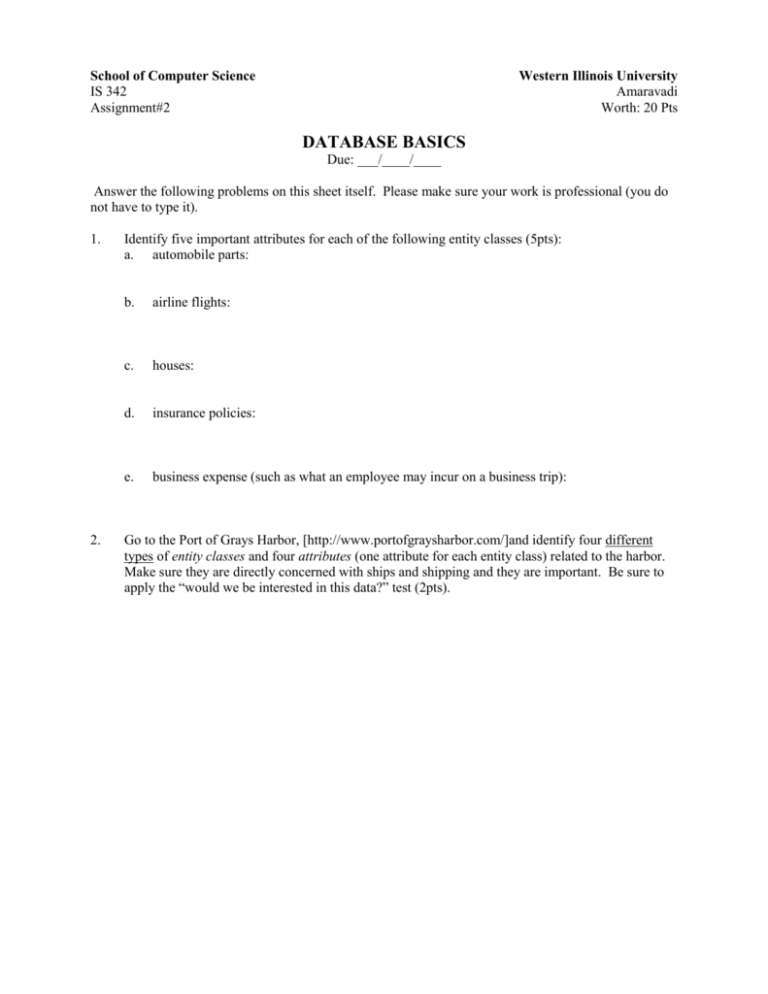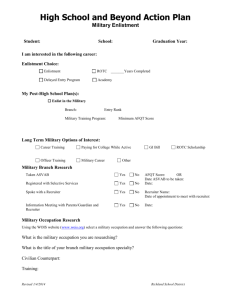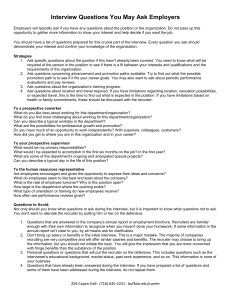Ass#2 - University Directory: Western Illinois University
advertisement

School of Computer Science IS 342 Assignment#2 Western Illinois University Amaravadi Worth: 20 Pts DATABASE BASICS Due: ___/____/____ Answer the following problems on this sheet itself. Please make sure your work is professional (you do not have to type it). 1. 2. Identify five important attributes for each of the following entity classes (5pts): a. automobile parts: b. airline flights: c. houses: d. insurance policies: e. business expense (such as what an employee may incur on a business trip): Go to the Port of Grays Harbor, [http://www.portofgraysharbor.com/]and identify four different types of entity classes and four attributes (one attribute for each entity class) related to the harbor. Make sure they are directly concerned with ships and shipping and they are important. Be sure to apply the “would we be interested in this data?” test (2pts). 3. Draw an enterprise data model (such as shown below/see also notes on Database Planning) for each of the following situations i.e. draw separate models for each situation (2pts): has Company Customers A ship can use several berths while in the harbor. A berth can be used by several ships. A car can have several parts, a part can go into more than one type of car. A student can win several awards, an award is given to only one student. A board supervises a single school district. A school district has only one board. 2 4. Draw an (integrated) enterprise data model for the following banking situation using these assumptions (3pts): a. Entity classes are Branch, Manager, Customer, Teller, Account, and Transactions. b. A branch can have several customers, but a customer is associated with a single branch. c. A branch can have several tellers but a teller may work at only one branch. d. An account is serviced by one branch only, but there can be several accts per branch. e. A customer can have more than one account (savings, checking, loan etc.) and the account can be operated by more than one account holder. f. A customer can perform more than one transaction (deposit, withdrawal), but each transaction, (designated by a transaction id) is performed by only one customer. g. A branch has one manager only and a manager works for a particular branch. h. A teller can handle multiple transactions. A transaction is performed by one teller only. 3 5. Develop an enterprise data model for the following campus interviewing situation. Recruiters representing different companies arrive on campus during the recruiting season. Each recruiter represents only one company. Larger companies may send more than one recruiter. Each recruiter is assigned a booth where interviewing will take place. [Obviously more than one recruiter may share a booth]. Companies offer one or more positions. Candidates interview with recruiters for positions in their respective organizations. A recruiter may be trying to find candidates for more than one position. A recruiter may interview one or more candidates for each position. A candidate can interview with several recruiters. (4pts) 6. Write SQL commands based on the tables given below, to produce a listings of the following: a. List the product number and description for all dining room furniture (ROOM = 'DR'). (1 point). b. List the name and address for customer number C325 (1 point) c. List the customer number, name and the orders they placed. (1 point). 4 d. List the results of running the query in “c” above. (1 point). 5 -----THIS IS A TUTORIAL PLEASE DO NOT SUBMIT THIS PART--------NOTE THAT AN SQL COMMAND HAS THE FOLLOWING FORMAT: Select <attribute1>, <attribute2>, … From <table1>,< table2>,… Where <condition1>, <condition2>…; For e.g. to select all order information for orders placed after 8/24, we write: Select Order#, Date, Customer# From Order Where Date > 8/24; For producing a listing of all customer names and addresses, we write: Select Name, Address From Customer; For producing a listing of all Product#s, Descriptions, Finish and Price for Chairs and Tables, we write: Select Product#, Description, Finish, Unit Price From Product Where (Description = ‘Chair’ ) or (Description = ‘Table’); To find vendors supplying tables we write: Select Vendor# From Product, Vendor Where Product.Description = “Table” and Product.Product# = Vendor.Product# 6 Pine Valley Furniture Database PRODUCT Prod# 0100 0350 0625 0975 1000 1250 1425 Description Table Table Chair Wall Unit Dresser Chair Bookcase Finish Room Oak Maple Oak Pine Cherry Maple Birch DR DR DR FR BR LR LR Unit -Price 500 625 100 750 800 400 250 CUSTOMER Cust# Name Address C100 C150 C325 C468 C500 Contemporary Casuals Value Furniture Home Furnishings Western Furniture Impressions 100 Oak Palo Alto CA 200 Walnut Cupertino CA 300 Maple San Jose CA 400 Locust San Francisco CA 500 Pine Redwood City CA ORDER Order# Date A1000 B2500 C3000 D1500 9/16/XX 10/15/XX 8/20/XX 11/1/XX Customer# C325 C468 C325 C500 VENDOR Product# 0350 0625 0975 1000 1250 1425 Vendor# VF88 VF88 VF88 QS145 TB899 TB899 7







